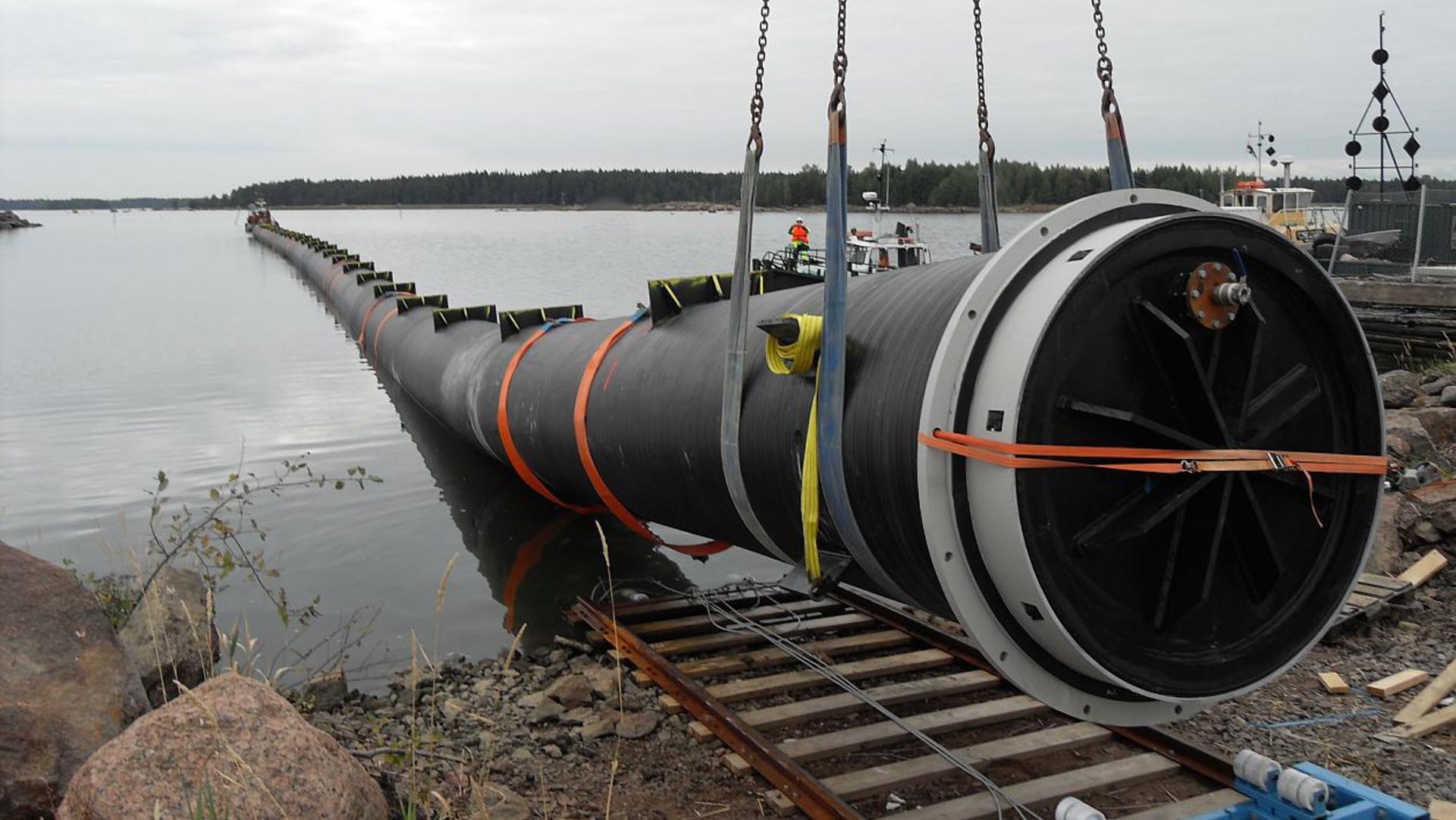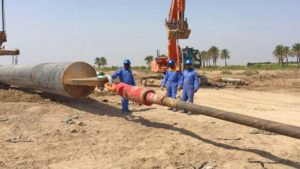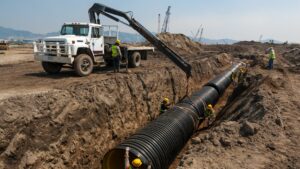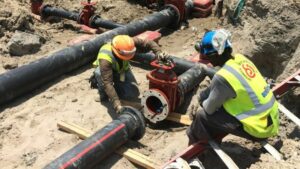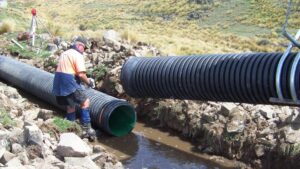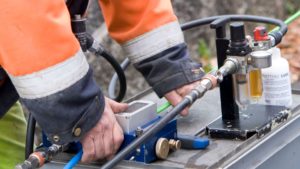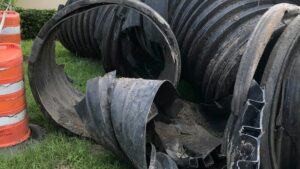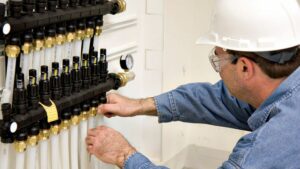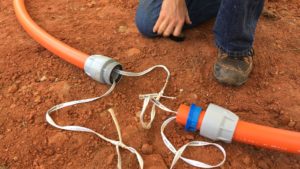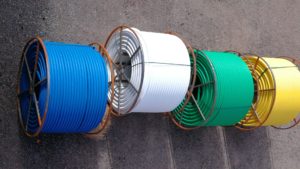Since the early 1960’s, just a few years after its first introduction, polyethylene (PE) piping has been increasingly used for various marine applications such as effluent outfalls, river and lake crossings, and fresh and salt-water intakes. Immunity to galvanic corrosion is a major reason for selecting PE.
The combination of air and water, but particularly seawater, can be very corrosive to ordinary metallic piping materials. But other beneficial features, as follows, combine to make PE piping particularly well-suited for marine applications:
Light weight
For a given pipe diameter and equivalent performance requirements, the weight of PE pipe is around one tenth of the weight of concrete pipe and less than one half that of cast iron. Handling of PE requires a minimum of heavy equipment.
It floats
Because PE’s density is about 96% of that for fresh water, and about 94% of that for sea water, PE pipe floats even when full of water. Long lengths can be assembled on shore where the empty pipe may be weighted to an extent that allows air-filled pipe to be floated to its intended location, and in most cases, is also sufficiently weighted to keep it anchored at its final submerged location after the air has been replaced with water.
Integral, “bottle-tight” joints
By means of the butt fusion method, continuous lengths of PE pipe can be readily assembled without the need of mechanical fittings. The resultant heat fusion joints are as strong as the pipe, and they eliminate the risk of joint leakage.
Flexibility
The flexibility of PE pipe allows it to be gradually sunk and to adapt to the natural topography of underwater surfaces. This results in a more simplified sinking procedure, and it also means that the flexible pipeline can normally be placed directly on the natural bottom without any trenching or other form of preparation of continuous level support.
Ductility (strainability)
Because of its relatively high strain capacity, PE piping can safely adjust to variable external forces generated by wave and current action. High strain capacity also allows the PE piping to safely shift or bend to accommodate itself to altered bedding that can result by the underscouring that may sometimes occur with strong wave and current actions.
Conventional, non-flexible materials such as concrete or iron pipe can only afford relatively small deformations before risking leakage at, or structural failure of, the joints.
As the exact magnitude of the maximum forces that can act on rigid pipes is difficult to predict, installations using piping that only allows relatively small deformation at the joints, or limited bending strain in the pipe, requires a large “safety factor,” such as a relatively heavy loading to stabilize the pipe against movement, or the trenching of the pipe into sea bed sediments so as to stabilize it against movement that can result from heavy sea action.
Such construction techniques tend to be more difficult, time-consuming and relatively expensive. In contrast, the flexibility and ductility of PE allows it to adapt to unconsolidated river and sea bottoms, and also to safely shift or bend under the forces resulting from occasionally strong currents or other actions.
For most marine installations, PE piping needs only to be sufficiently weighted to keep it at the intended location and to prevent it from floating. This results in easier and less costly installations and in a submerged piping system that is capable of delivering very reliable and durable service.
By choosing PE pipes, many projects have been accomplished which would not have been economically realistic with traditional piping materials. The lower overall cost of PE piping installations allows for the option of installing several small outfalls rather than one large one.
Multiple outfalls can achieve greater environmental protection by the discharging of smaller quantities of effluent at separated points of discharge, and their use often results in lower onshore pretreatment costs.
A marine pipeline installation may involve considerable risk to the pipeline integrity both during installation and while in service. Guidance provided herein on the design and installation of PE piping is limited to those issues that are specific or are related to this material.
It is not the intent of this chapter to cover the many other design, construction and safety issues that need to be considered in a marine installation.
The primary focus of this article is the design and installation of underwater lines by the “float-and-sink” method that is made possible through the use of the light-in-weight and flexible PE pipe.
Under certain conditions – such as when it is not possible to delay navigation long enough to launch and sink a pipeline – it may be necessary, or it may be more practical, to use a variation of the
“float-and-sink” method that is herein described.
In one variation, one or more separate long-segments of the pipeline with a flange at each end are assembled and floated. These segments are then sunk, properly positioned and bolted together by divers. Another alternative method is the “bottom-pull” method.
However, regardless of which method is used, the general design and installation principles that apply to the “float-and-sink” method also apply to alternate methods. Other marine applications for which PE piping has proven to be very suitable include temporary water surface pipelines, lines installed over marshy soils and lines used in dredging operations.
These are described briefly. Design and installation for these marine applications are conducted in accordance with essentially the same criteria and principles as described for the “float-and-sink” method. Read Full PDF

